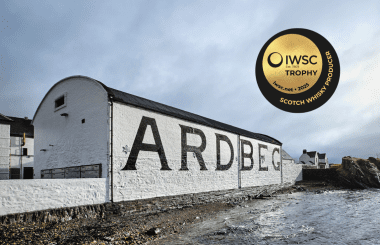Judges’ deliberations: IWSC judging in Kentucky comes to a close
As the second year of IWSC judging in Kentucky concludes, we look back on the week and speak with our judges to explore the trends that emerged and how they felt about the whiskies and RTDs they assessed.
This year’s judges, overseen by Dawn Davies MW, IWSC Spirits Judging Committee member, included Dr Bill Lumsden, Bridget Albert, Ryan Chetiyawardana, Millie Milliken, Reece Sims, Frank Dobbins III, Ryan Mills, and guest local judge Ed Escott, who joined us for a behind-the-scenes view of the IWSC. Our judging session took place with the support of Heaven Hill at their visitor centre, the Heaven Hill Experience in Bardstown.
Craft and character: unpacking the latest trends in North American whiskey
As global interest in American whiskey continues to grow, this year’s whiskey and RTD judging offered an insightful lens into the evolving landscape of production and style. While full medal results will be announced shortly, several compelling trends are already emerging, revealing the directions in which quality, regional expression and category innovation are heading.
Kentucky holds court, but new voices emerge
Perhaps unsurprisingly, Kentucky continues to be the dominant voice in American whiskey. The volume of entries from the state was substantial, spanning a wide range of styles from traditional straight bourbons to more experimental expressions. However, what is noteworthy is not just Kentucky’s presence, but the increasing quality and confidence from other regions.
Producers from Tennessee, Colorado and Indiana demonstrated their own identity, often favouring high-rye mash bills or embracing bold barrel finishes. These entries, while fewer in number, frequently displayed polish and a distinct sense of place. Even states with historically limited whiskey exposure, such as Arizona or Massachusetts, submitted entries that suggest a broadening of the category’s geographical reach and creative ambition.
The new American Single Malt category provided some particularly exciting examples, and the judges were enthusiastic about its growth. Ryan Chetiyawardana found this year’s entries “really fascinating”. Bridget Albert shared this view, believing it points to there being “much more to explore” in the category.
The alcohol sweet spot
One trend that surfaced consistently across styles and regions was the significance of alcohol strength in shaping both flavour and perceived quality. While entries ranged widely, from the mid-30s ABV to over 80%, those in the 46% to 55% ABV range consistently displayed the most balance, complexity and finish.
The judges agreed that the best spirits showed composure, and were often disappointed by entries that delivered power but lacked refinement, suggesting that sheer intensity does not always equate to sophistication in a judging context.
Dr Bill Lumsden noted that the best entries had “superb complexity, great balance, and very interesting taste profiles”, a view supported by Reece Sims, who added that for her, the “top-scoring spirits stood out for their balance, clarity of style.”
Traditional styles still reign supreme
While the American whiskey category continues to diversify, traditional styles remain central to perceptions of quality. Straight bourbons once again stood out for their consistency and craft. With a wide array of mash bills, age statements and wood treatments, this category still offers the most dynamic canvas for distillers to showcase their skills.
Rye whiskies also presented a compelling case for renewed attention. With their lifted spice, leaner texture and food-friendly structure, ryes have evolved beyond a niche interest to become a staple for many producers and drinkers alike. Ryan Chetiyawardana found the “rye space was fascinating and had some incredible whiskies”.
In contrast, flavoured whiskeys and RTD-style cask finishes struggled to make a similar impact. These styles, while innovative, often lacked the depth and coherence found in more conventional categories. That is not to say there is no place for them in the market, but it does highlight the importance of rigorous flavour development and balance, particularly when aiming for critical acclaim.
The 2025 medal winners
The full results will be published on Monday 16 June. Stay tuned to discover which North American whiskies and RTDs performed most strongly.



